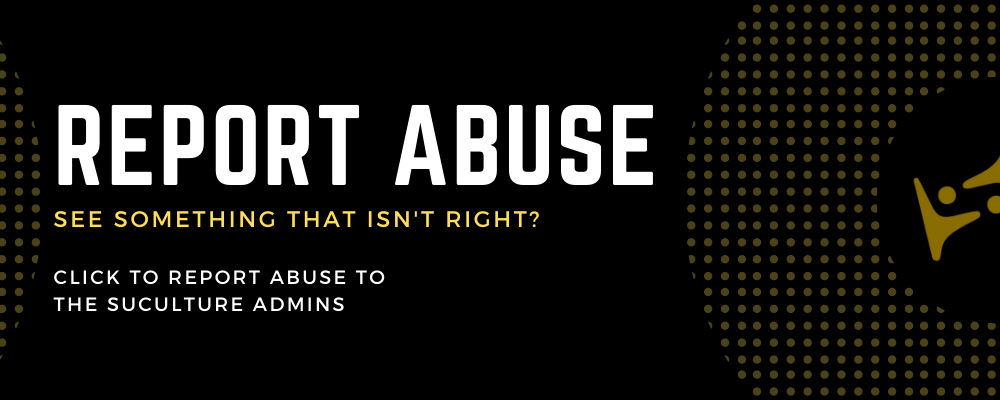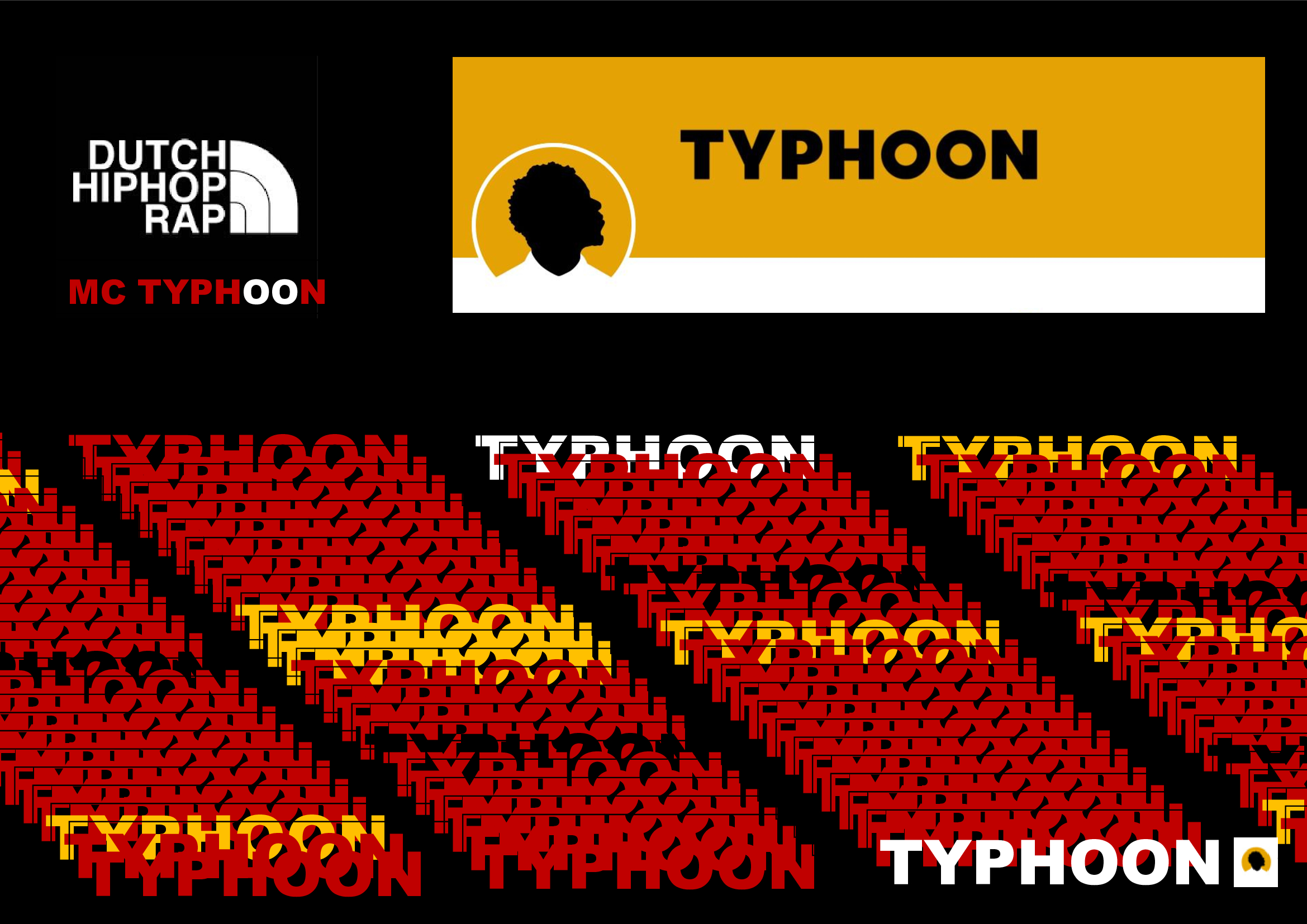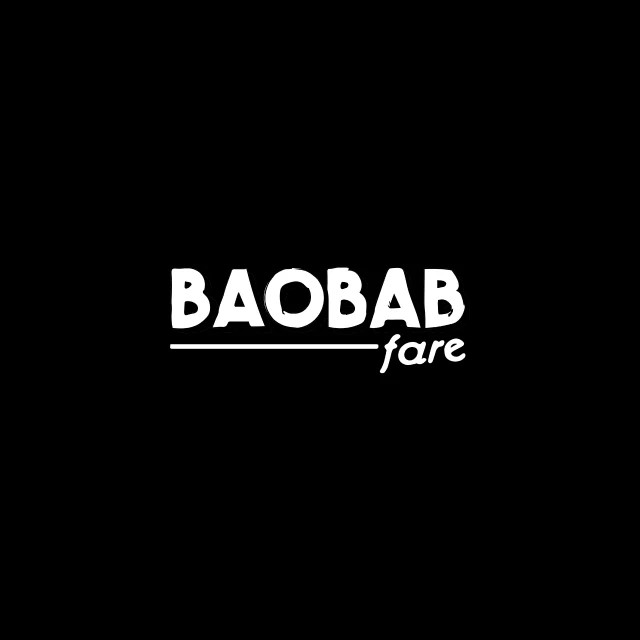-
MwandishiMachapisho
-
-
Mtumwa, au
Watumwa.
Wafanyabiashara, au
Mlaghai.
Watakatifu, au
Wenye dhambi.
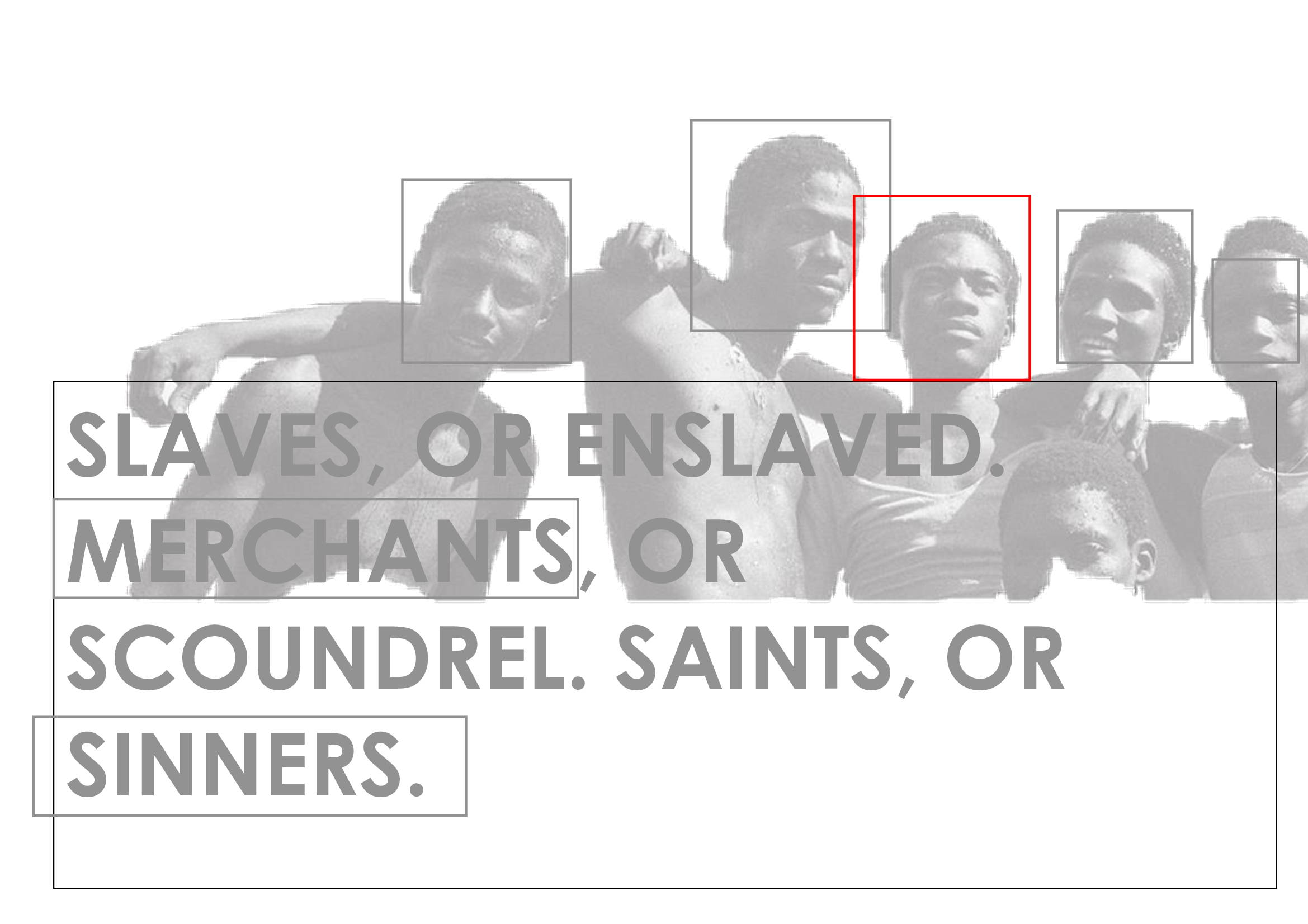
Introduction & Timeline:
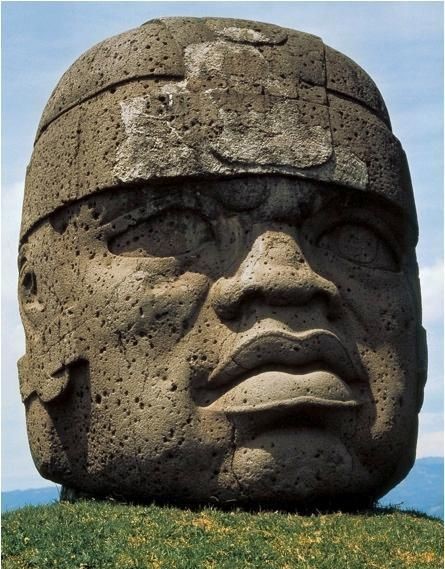
Contrary to Eurocentrism’s pseudohistorical underpinnings, Afrika ya Kale haikutengwa na ulimwengu wa zamani.
For centuries, Eurocentric narratives have dominated global historiography, frequently marginalizing Africa’s role in world history. Perpetuated by colonial-era historians, these perspectives often depicted Africa as a dark, passive and isolated continent.
Historical and archaeological research across academia, reveals however an intricate picture of the ancient trans-saharan African trade, dating from approximately 5000 B.C (muda mrefu kabla ya 1 karne CE; and described as beginning with the age of African metallurgy in the case of the blacksmith-kings of Tarkur ‘old Senegal’), ikianzia zamani Ufalme ya Kush katika Kerma, Sudan; kupitia kwa Darb el-Arbain trade route, and facilitating the exchange of diverse commerce in incense, wheat, spices, gold, salt, animals/poultry, skilled artisan’s and ivory; and importantly, the import of minerals such as ‘obsidian'kutoka Tarkur [old Senegal] to create blades, objects, and metalworking – underscoring the high value placed on African trade-craft within these trade corridors. The region was an ethnic melting pot, with commerce spanning extensive geographical footprints; with records showing lasting contributions of Africa to other regions and cultures, across Mesopotamia, the Levant, na Aegean world, and anthropological research recently discovering colossal Olmec sculptures with African facial lips and nose features, and Manding maandishi katika misitu minene ya South America, suggesting early trans-continental connections, and cultural exchanges.
Njia za Silk:
Biashara ilibeba habari, na mitandao ya biashara iliyounganishwa inayounganisha Afrika to most of the old world, brought about an exchange of trade in oriental [eastern] silks for kahawia, jade, rangi, viungo, dhahabu, mafuta, zana za kughushi, wakiwemo viumbe wa kizushi kama vile twiga [au, qilini, kuheshimiwa Kichina, Kijapani na Kikorea mythology] na kadhalika, karibu 114 KK, kutoka kwa kupanua nasaba ya Han.
Sanaa ya utengenezaji wa hariri ilibaki kuwa ya kipekee Kichina export during this period, and the Han imperial documents show diplomatic and trade relations between the Nasaba ya Han and Africa, with a diplomatic envoy ‘Zhang Qian' kutumwa kwa usalama wa biashara ya nje ya bara, na pia kuunda ulinzi wa kisiasa, kwa biashara inayokua ya hariri. Zoezi hili liliendelea hadi mapema Nasaba ya Ming, na kumbukumbu za 'Zheng He' (Mwanadiplomasia na Admiral) akitembelea mambo ya ndani ya Afrika kati ya 1419 CE na 1433 CE, na wajumbe/mabalozi wa Afrika walioalikwa na Mfalme Zhu Di kusherehekea kwa kina sana mwaka mpya wa Kichina kwenye jengo jipya Mji uliokatazwa; karibu 1421 CE.
The Graeco-Roman periplus "Periplus ya Bahari ya Erythraea” pia ilitoa rekodi ya safari za meli na fursa za kibiashara kati ya Afrika na bandari za nje/kimkakati za biashara.
The Ufalme wa Kirumi kurithi mitandao ya biashara iliyoanzishwa ambayo iliunda sehemu ya Barabara ya hariri kati ya njia za biashara za mashariki na Afrika, kufuatia ushindi wa Misri katika 30 BC.
Lucius Septimius Severus’s Ancestry – (“Aethiops quidam e Numero Militari”):
Milki ya Kirumi iliyokuwa ikipanuka ilifyonza biashara, aristocracy na mapokeo ya kijeshi ya wasomi watawala wa majimbo-huru yaliyoshindwa, na kuanzisha uhusiano wa useneta/kidiplomasia. Utofauti mkubwa wa makabila mbalimbali uliokuwepo ndani ya idadi ya watu waliokuwa wakiongezeka katika Milki ya Kirumi ya Kaskazini mwa Afrika umeorodheshwa katika Notitia Dignitatum ("Orodha ya Ofisi za Tawala za Kirumi"). na kama inavyoonyeshwa katika Mwafrika mwenye ujuzi (Aethiopes/Mauri/Moorish) Kikosi cha kijeshi kinachounda sehemu ya kampeni za Jeshi la Kirumi la Ujerumani, na Britannia, na katika Lucius Septimius Severus’s ukoo.
Katika 193 CE, Lucius Septimius Severus alitawazwa kuwa mtawala wa wote Ufalme wa Kirumi na ikawa ya kwanza ya Roma Mwafrika Emperor; a product of the cultural and political union/alliance between an African father, and a mother of Roman descent, coming from a prominent Roman family of equestrian rank.
Msafara mashuhuri zaidi wa baadaye wa Mfalme Septimius Severus enzi kuu ilikuwa katika jimbo la Kirumi la Britania; na ambapo alifia ndani York, karibu 211 CE.
During this period African’s were known by many names, and led the conquest of the Iberian Peninsula circa 711 CE mpaka 1492 CE, kufuatia anguko la Dayosisi ya Kirumi Africae (Roman Diocese of Africa), and the Roman Empire.
Biashara ya hariri barani Afrika iliendelea kwa muda mrefu, na kile kinachojulikana sasa kama 'njia za hariri, au barabara ya hariri' ilikuwepo kwa zaidi ya miaka 1,500, hadi takriban. 1453 CE.
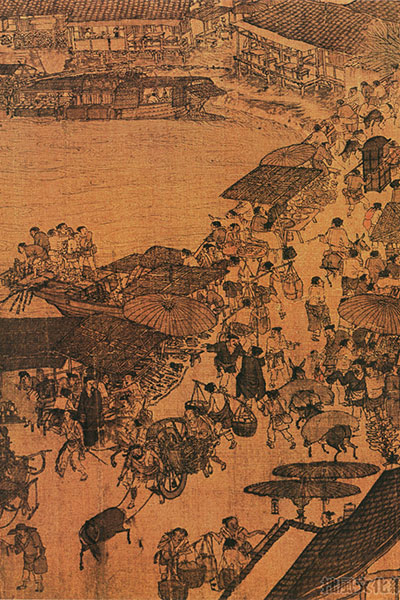
The Zimbabwe kubwa, Mali na Ufalme wa Ghana lay on the trade routes, between the east coast and the interior of Africa, giving rise to a host of middlemen and trading posts, with the requirement for taxes and protection along the way.
Dini, teknolojia mpya, uvumbuzi na mawazo yalienea kando ya barabara za biashara za Kiafrika kama vile bidhaa, na kusababisha ukuaji wa miji ya kitamaduni kando ya mambo ya ndani ya njia za biashara za Sahara, ambayo ni. Gao na Timbuktu, na kadhalika
Katika kilele cha Mwamko wa Kiafrika, the well organised system of government under the leadership of King’s and Queens’s, such as Shanakdakhete (1st century BCE onwards Kingdom of Kush (Nubia, modern-day Sudan); Kaleb of Axum (6th century CE onwards); Tunka Manin (11th century CE onwards, Region of Ghana Empire (Modern-day Mali, Mauritania, Senegal); Sundiata Keita (1217–1255 CE) Region of Mali Empire (Modern-day Mali and surrounding regions); Musa Keita I au Mansa Musa (C.1312–1337 CE), the extensive travel and trading networks of African merchants and African scholars developed an important book trade, establishing The Kingdom of Kush, as well Timbuktu (Modern-day Mali) as scholarly centres in Africa [known for producing the Meroitic script, one of Africa’s earliest writing systems,] circa ya 4 CE na kuendelea.
As a result, tales of Africa’s wealth, exotic exports, renaissance, lifestyle and high-culture fuelled speculation in Ulaya, as not just being extremely rich, but also being particularly mysterious. These stories helped prompt the European interest and exploration of opportunities in Africa.
The decline of these African city-states resulted from a shift in the dynamics of international trade, internal rivalries [notably, the Saadian/Morocco uvamizi wa Niger mambo ya ndani, Vita vya Tondibi, na Vita vya Alcácer Quibir] njia mpya za biashara ya meli, ujuzi wa hali ya juu wa baharini/urambazaji na silaha, kuongezeka kwa mahitaji na ushindani wa ardhi, upatikanaji wa bidhaa na rasilimali kama vile dhahabu, mabadiliko ya utawala wa kijiografia na itikadi.
Mgawanyiko wa kisiasa wa eneo hilo, uporaji wa miji yenye tamaduni nyingi, fasihi na hazina za milki kuu kama vile Mali, Songhai, Kongo/Kongo, na kuongezeka kwa uwepo wa Ottoman‘s, and Portugal, marked the end of the region as a dynamic force in commerce.
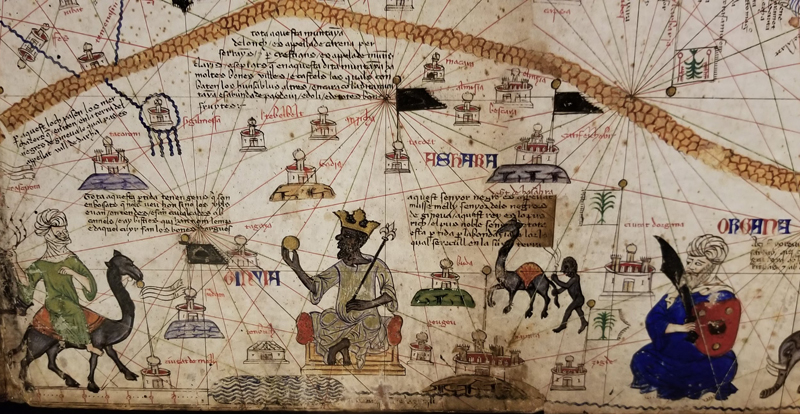
The beginnings of European
Activity in Africa:
Kama wasafiri wengine wa kigeni na wachuuzi wa bidhaa hapo awali, wafanyabiashara na wafanyabiashara wa Kiafrika walikuwa wazi kwa wageni wa Uropa.
Kuwasili kwa wafanyabiashara wa kwanza wa Uropa, zaidi ya miaka 5440 baada ya kubadilishana (inayojulikana na kurekodiwa) biashara ilianza Afrika, inaweza kuhusishwa na nahodha mdogo wa Ureno 'Antam Gonçalvez' ambaye, baada ya kusikia hadithi za uwezekano wa biashara na faida, alianza safari ya kwenda Afrika Magharibi, Kusini mwa Jangwa la Sahara 1441 CEchini ya maelekezo ya 'Dom Henrique wa Ureno, Duke wa Viseu’ to obtain seal skins, spices and oil, for onward sale in Lizaboni.
Ureno was desirous to retain a monopoly on trade in Africa, and sought justification of its position, ‘early discoveries’ and sphere of influence (ya njia mpya za biashara zilizopatikana), kupitia a Papa Bull ya 1442 CE, iliyoteuliwa na Papa Eugene IV, the consequence of which would be the legitimisation of the capture and enslavement of non-Christian Africans [in the newly explored land], under the premise and designation of the enterprise as a crusade; a Papa Bull kwa Papa Nicolas V, katika 1452 CE na 1455 CE, na Papal Bull kutakasa Mkataba wa Tordesillas (mwaka 1494 BK).
Wakati huo, wakati wa karne ya 15 na 17, fedha na dhahabu vilikuwa viwango vya kimataifa vya kubadilishana katika Ulaya na Asia. Ugavi wa madini ya thamani ulikuwa muhimu ili kukuza uchumi, na kurejesha sarafu kwa kubadilishana na kuagiza.
Mantiki sawa na nguvu za nyenzo zilikuwa zikifanya kazi katika unyonyaji wa dhahabu ya Mayan na Uhispania, na hii ilipokwisha, ushujaa wa migodi ya fedha ya Mexico. Kwa hakika, ushindani mkubwa kati ya nchi za Ulaya katika karne ya 15 na 18 ulitokana na tamaa ya kulinda na kuimarisha uchumi na sarafu zao.
Habari za ushujaa wa Ureno barani Afrika zilisikika katika nchi jirani Uhispania, na hela zingine za Ulaya, na hisia nyingi zimeachwa nje ya nyara.
Kati ya 1495 CE na 1559 CE, mamia ya meli za Kireno zilivamiwa, kutekwa na kuporwa na Waingereza, na vivyo hivyo, kujihusisha kwa siri kwa Kiingereza katika Vita vya Agadir ('Santa Cruz') 1541 CE.
Mfalme Yohana III ya Ureno aliandika kwa Malkia Mary wa Uingereza (1555. CE) kama matokeo, kudai fidia kwa meli zilizokamatwa na kuporwa. Hasa, katika Ureno, Uhispania na kote Ulaya, ni mfalme aliyeanzisha hati miliki za ukiritimba wa biashara katika 'mpaka mpya wa kibiashara' unaoibukia, akipata wajibu, au kodi kwa ukiritimba wa kibiashara.
Notable timelines of European involvement in Africa include Spain (from 1462); Uingereza (kutoka 1562, with Queen Elizabeth I granting legitimacy to the privateering activities of John Hawkins, Francis Drake, et al. kupitia utoaji rasmi wa nembo ya kipekee, na Bermuda kuwa milki ya Taji mnamo 23 Novemba 1614); Uholanzi (kutoka 1592); Ufaransa (kutoka 1594), na kadhalika.
Biashara na Afrika ilihitaji utajiri mkubwa, na ufadhili. Ilibakia kuwa pendeleo la pekee la wafalme wa Ulaya, wakuu, au wafanyabiashara matajiri. Kwa hivyo Wazungu waliendeleza ubunifu zaidi, kwa biashara inayotamaniwa barani Afrika, kupitia kuanzishwa kwa mashirika ya biashara. Kampuni ya Dutch East India, Danish West India Company na The French West India Company zilianzishwa mwaka 1602/1659/1664 mtawalia, ambazo ziliwezesha wigo mpana wa wafanyabiashara kuwekeza katika biashara yenye faida mpya iliyopatikana barani Afrika; bima, na kueneza hatari zake za biashara.
The Kampuni ya Royal Adventurers ya Uingereza iliundwa mnamo 1660 na Mfalme Charles II ya Uingereza, mkataba unaotoa ukiritimba wa biashara katika pwani ya magharibi ya Afrika, inayobadilika kuwa Kampuni ya Royal African katika 1672.
Mageuzi ya taasisi hii ya ubunifu, kampuni ya pamoja ya hisa/biashara, ilikuwa ni maendeleo moja muhimu zaidi katika ulimwengu wa Karne ya 17 commerce. This guaranteed Ulaya could harness its resources towards the structuring and maintaining of trade in Africa, as well as much of the world.
Hatimaye, ilianzisha utaratibu ambao kupitia Ulaya, bila kukusudia, kuenea, kujipenyeza na kukoloni sehemu kubwa ya dunia.
Katika kipindi hiki mazingira ya kijamii na kisiasa ya Uropa yalipata mabadiliko ya mfululizo kutoka kwa ufalme, hadi biashara ya kibiashara na kitovu cha biashara ya viwandani. London, Antwerp, Liverpool, Amsterdam na Nantes ziliibuka kama vituo kuu vya kifedha vya Ulaya.
Reductionism and the
tradition of diminishing
African cultures and its
place in history: [The
Language of Legal
Fiction.]
The Corpus Juris [The body of Laws] creates a critical foundation from which to think about the problem of legal personhood.
Ius naturale / lex naturalis [Natural Laws], (eternal and immutable) renders conceptually, corporeal values, intrinsic to human nature; complex sentient creatures imbued with, not only individualism, needs and appetites, but self-awareness (consciousness), rights, privileges, obligations, the capacity to create legal relations, and by the limits of pain, illness, suffering and death.
Dhana za kinadharia za kanuni za sheria (sheria za kisheria) huunda mtaro wa utambuzi wa vyombo mbalimbali/ vyenye sura nyingi, mikusanyiko, watu binafsi, mchakato wa "mengine”, humanizing, and expanding the community of persons. This is problematic, plagued by uncertainty and indeterminacy (at worst, arbitrary), and limits the full potential and promise of personhood.
Oblivious to the significance of the word, the pervasive use of terms such as “slave” and/or words analogous to this, pervades and conditions all other inherent identities, either chosen or given. To reduce the person [or body] to a non-human noun is to produce linguistic violence, and strips the individual of agency. To argue contrary flies in the face of empirical fact. The scholarly exercise of embellishing and sugar-coating the language of historical recall, implies a degree of wilful and/or premeditated amnesia and wastes an opportunity to reinforce the brutish-callousness of the word.
Likewise, the reduction of Mwafrika realities as mythic representations, or phenomena, devoid of history, commerce, philosophy and intellectual pursuits – that Africa had no history – is a Eurocentric idea, given the aforementioned timeline, and perpetuates a narrative that erases the tangible contributions of African city-states to global civilization. So also is the contemporary construct of ‘third-world’, ‘underdeveloped’, ‘developing’, or ‘undemocratic’ – judged pursuant to Eurocentric standards.
Notably, distinguished African historian’s, anthropologist’s and sociologist’s such as Cheikh Anta Diop, John Henrik Clarke, na WEB Du Bois et-al, have defined this peculiar/Eurocentric faux-ethnographic characterisation of the African sociocultural ethnology, as indeed a ‘new invention’, a ‘religion [or idea]’ founded on the Eurocentric (scholarly) dogma that all the hues of God are grounded on the intrinsic hierarchy of religious orthodoxy; with the inevitable corollary of the collective physical, ideological, religious, systemic or cultural traits of the ‘Other’ (individuals who were outside the contemporary hegemonic power structure) as significantly less prized by ‘modern societies’.
The primary basis for this reconfiguration was to institute, and strengthen the agency of Eurocentric capitalist systems, backed by a cluster of social, incorporeal/religious, semantic conjecture and legal regimes.
Kama matokeo, na bila shaka yoyote, ambapo dini hii mpya (au muundo wa kifalme) haikuweza kupata waongofu kwa kushawishiwa kwa amani au woga, ilitumia mbinu za kizamani/zisizo za kibinadamu ili kulinda mamlaka yake, kuandikisha sheria, desturi na taasisi kuweka ndani. kutekeleza haki zake.
Hitimisho:
Sosholojia ya utawala iliibuka kupitia Papa ng'ombe ya 1442 CE, 1452 CE, 1455 CE, na 1494 CE. Its associated theories and pseudo-scientific markers of ‘natural differences’ of ya 18th, the 19th, na the 20th karne, institutionalised and provided a moral justification to sustain the systemic avarice emanating from Europe, na Marekani; leading up to the 21st century. The core of this system is normalised through contemporary forms and mediums; vastly embedded in the social, scientific, economic/financial, political (public policy), academic, spiritual, media, literary and cultural spaces, and exercised through an intricate web of norms and laws, the institutional and structural power accumulated recently.
Uingiliaji kati wa Ulaya karibu mid-15th century, ilivunja miundo ya Kiafrika iliyoendelea, ya kimaendeleo, ya kisiasa na kijamii. Hadi katikati ya karne ya kumi na tano (CE), Afrika ilikuwa ni nguvu ya kiuchumi inayoibuka. Afrika ya Kati ilikuwa na utamaduni wa kisasa wa chuma unaounganisha Bahari ya Kaskazini, Kusini na Hindi. Afrika Magharibi iliunganishwa na Bahari ya Mediterania kwa njia za biashara kuvuka Sahara. Ujio wa Ulaya wa 1441 CE kuendelea, ilikatiza mageuzi ya asili ya mazingira tata ya kibiashara ya Kiafrika yenye tamaduni nyingi; mazingira yake ya kiviwanda, maalum/kisayansi, kidini na kitaalamu ya kale.
Machafuko yaliyofuata yalisababisha kusambaratika kwa familia, na kusababisha uchungu usioelezeka wanaume, wanawake na watoto, with Africa losing centuries-old skilled artisans, goldsmiths, jewellers, masons, carpenters, farmers, musicians, priests, kingmakers and scholars; the loss of neighbours, brother’s, sister’s, aunt’s, uncle’s, son’s, daughter’s, cousin’s, mother’s, father’s, and culture’s.
What is rarely told is that a staggering 40% of the UK’s budget in 1833 CE, the equivalent of approximately £20bn in today’s terms, was used to compensate English merchants towards the eventual demise and collapse of the illicit profiteering of trade in Africa; while excluding displaced African’s from any restitution.
Kwa itikadi inayojikita kwenye kanuni ya uundaji wa pseudo-hegemonic cum-capitalist, athari mbaya kwa bara la Afrika, katika masuala ya nasaba, kiuchumi na kifedha, haiwezi kupimika.
© UTAMADUNI
Bibliography:
1. African Historical Reach and Bibliography:
- Fage, J. D., & Oliver, R. A. (Eds.). (1975). The Cambridge History of Africa: Volume 2, c. 500 BC–AD 1050. Cambridge University Press.
- This book provides an extensive overview of ancient Africa, detailing the role of trade routes, metallurgy, and economic exchanges across the Sahara, which connects with the spread of African cultural practices.
- Ehret, Christopher. (2002). The Civilizations of Africa: A History to 1800. University of Virginia Press.
- Ehret’s work focuses on early African civilizations, including those involved in trans-Saharan trade, providing a basis for understanding the significance of metallurgy and commerce in pre-Islamic West Africa.
- McIntosh, Roderick J. (1998). The Peoples of the Middle Niger: The Island of Gold. Wiley-Blackwell.
- McIntosh’s research delves into the role of the Niger River in trade and the movement of goods across West Africa, including gold, salt, and other materials crucial to the trans-Saharan trade network.
- Dixon, David, and Dixon, Roger. (1983). “The Trans-Saharan Gold Trade: The Kingdom of Ghana and the Islamic Empires of the West.” History Today, 33(10), 16-23.
- This article covers the importance of the gold trade and its role in the ancient trans-Saharan trade network, with specific emphasis on the early West African empires like Ghana and their trading relationships.
- Rathbone, R. (2000). “The Trans-Saharan Trade.” In Africa: The Art of a Continent, edited by T. Phillips, 72-75. Royal Academy of Arts.
- Rathbone discusses trans-Saharan trade in terms of its artistic and cultural impacts, including how goods like ivory and gold affected the material culture of ancient African societies.
- Oviedo, Fernández de. (1535). Natural History of the West Indies (Translated by Sterling A. Stoudemire, 1959). University of North Carolina Press.
- Oviedo’s work, though initially focused on the Americas, is referenced in discussions about African influences in pre-Columbian American contexts, especially considering potential contacts suggested by more recent studies of inscriptions.
- Van Sertima, Ivan. (1976). They Came Before Columbus: The African Presence in Ancient America. Random House.
- Although this work has faced some scholarly criticism, it remains a widely cited source discussing the possibility of pre-Columbian African contact with the Americas, including evidence like inscriptions.
- Mauny, Raymond. (1971). “The Western Sudan.” In General History of Africa: Volume II, Ancient Civilizations of Africa, edited by G. Mokhtar, 290-314. Heinemann.
- This chapter in the UNESCO General History of Africa provides details on the historical and cultural dynamics of the Western Sudan, including trade routes, metallurgical practices, and commerce that spanned the Sahara.
9. Cheikh Anta Diop
- Diop, Cheikh Anta. (1981). Civilization or Barbarism: An Authentic Anthropology. Lawrence Hill Books.
- This foundational work examines African civilizations’ contributions to world history, including their advancements in metallurgy, trade, and cultural dissemination.
- Diop, Cheikh Anta. (1974). The African Origin of Civilization: Myth or Reality. Lawrence Hill Books.
- A critical exploration of African civilizations’ roles in shaping the ancient world, focusing on Egypt and its connections to sub-Saharan Africa.
10. John Henrik Clarke
- Clarke, John Henrik. (1993). African People in World History. Black Classic Press.
- A concise yet impactful narrative of Africa’s role in global history, emphasizing its civilizations, trade routes, and the spread of knowledge.
- Clarke, John Henrik. (1994). Christopher Columbus and the African Holocaust: Slavery and the Rise of European Capitalism. A&B Books.
- This book critiques European expansionism, connecting the transatlantic slave trade to Africa’s economic exploitation.
11. Basil Davidson
- Davidson, Basil. (1994). Africa in History: Themes and Outlines. Simon & Schuster.
- While not African himself, Davidson’s collaborative work with African scholars has provided deep insights into the trans-Saharan trade and African empires.
12. Runoko Rashidi
- Rashidi, Runoko. (2001). Introduction to the Study of African Classical Civilizations. Karnak House.
- Focuses on ancient African civilizations’ global impact, including their trade networks and intellectual contributions.
- Rashidi, Runoko. (1995). African Presence in Early Asia. Transaction Publishers.
- Co-authored with Ivan Van Sertima, this work traces African influence in Asia, offering parallels to Africa’s role in ancient global trade.
13. Ivan Van Sertima
- Van Sertima, Ivan (Ed.). (1983). Black Women in Antiquity. Transaction Publishers.
- Highlights the contributions of African women in ancient trade, governance, and culture.
14. Molefi Kete Asante
- Asante, Molefi Kete. (2007). The History of Africa: The Quest for Eternal Harmony. Routledge.
- A detailed overview of Africa’s historical contributions, including its trade empires and intellectual traditions.
- Asante, Molefi Kete. (1988). Afrocentricity: The Theory of Social Change. African World Press.
- Introduces Afrocentric theory as a lens to understand Africa’s historical and cultural prominence in global history.
15. Sylviane A. Diouf
- Diouf, Sylviane A. (1998). Servants of Allah: African Muslims Enslaved in the Americas. NYU Press.
- Explores the role of African Muslim scholars and merchants in shaping the Atlantic world through trade and culture.
16. George G.M. James
- James, George G.M. (1954). Stolen Legacy: Greek Philosophy is Stolen Egyptian Philosophy. Philosophical Library.
- In this seminal work, James argues that much of what is attributed to Greek philosophy is rooted in African (Egyptian) knowledge systems, highlighting Africa’s intellectual contributions to the world.
17. Chancellor Williams
- Williams, Chancellor. (1974). The Destruction of Black Civilization: Great Issues of a Race from 4500 B.C. to 2000 A.D. Third World Press.
- A groundbreaking study of African civilizations, detailing their decline due to internal and external factors, including European and Arab incursions, and emphasizing the centrality of trade in African history.
18. Yosef Ben-Jochannan
- Ben-Jochannan, Yosef. (1993). Africa: Mother of Western Civilization. Black Classic Press.
- A comprehensive examination of Africa’s foundational role in the development of Western civilization, including trade, science, and culture.
- Ben-Jochannan, Yosef. (1989). Black Man of the Nile and His Family. Afrikan World Infosystems.
- Explores the contributions of Nile Valley civilizations to global history, with a focus on the interconnectedness of African societies and trade networks.
19. Walter Rodney
-
- Rodney, Walter. (1972). How Europe Underdeveloped Africa. Howard University Press.
- Examines the economic and social impact of European intervention in Africa, particularly in disrupting preexisting trade networks.
- Rodney, Walter. (1981). A History of the Upper Guinea Coast, 1545 to 1800. Monthly Review Press.
- Focuses on African agency in trade and governance before and during European incursions.
- Rodney, Walter. (1972). How Europe Underdeveloped Africa. Howard University Press.
20. Vansina, Jan
-
- Vansina, Jan. Paths in the Rainforests: Toward a History of Political Tradition in Equatorial Africa. Madison: University of Wisconsin Press, 1990.
21. Wright, Donald
-
- Wright, Donald. The World and a Very Small Place in Africa. New York: M.E. Sharpe, 1997.
In-Text Citations
- For information on the ancient trans-Saharan trade, reference Fage & Oliver (1975) na Ehret (2002), as both texts provide foundational insights into the role of trade across the Sahara from prehistoric times.
- The McIntosh (1998) na Dixon & Dixon (1983) references provide additional support for understanding the trade routes that facilitated exchanges of goods like gold and salt, critical to West Africa’s economy.
- The Van Sertima (1976) na Oviedo (1535) sources cover anthropological evidence of early African inscriptions and cultural influences potentially present in the Americas.
- For metallurgy in ancient Africa, Mauny (1971) na Munson (1980) discuss the techniques and cultural significance of early metalworking, emphasizing its role in trade and economy across West Africa.
2. Africa/Chinese Historical Links and Bibliography:
- Liu, Xinru. (2010). The Silk Road in World History. Oxford University Press.
- This book offers an overview of the Silk Road, including the early Han Dynasty’s efforts to expand trade and diplomatic relations across Asia, reaching as far as the Middle East and Africa. It also discusses Zhang Qian’s missions and the Chinese silk monopoly.
- Adshead, S.A.M. (2000). China in World History. Palgrave Macmillan.
- Adshead’s work covers the history of China’s interactions with the world, detailing the Han Dynasty’s and Ming Dynasty’s diplomatic outreach to regions including Africa, as well as trade exchanges involving exotic goods.
- Levathes, Louise. (1994). When China Ruled the Seas: The Treasure Fleet of the Dragon Throne, 1405–1433. Oxford University Press.
- Levathes provides an in-depth look at the maritime expeditions of Zheng He, including his journeys to East Africa, diplomatic exchanges, and the arrival of African emissaries in China during the Ming Dynasty.
- Hansen, Valerie. (2012). The Silk Road: A New History. Oxford University Press.
- Hansen explores the Silk Road from a fresh archaeological and historical perspective, touching on the trade goods (like silk, jade, and spices) that moved through interconnected trade routes. She also discusses cultural exchanges, including the reverence for exotic animals like the giraffe.
- Yao, Alice. (2010). “Silk Road Traders: A Global Business Network.” Journal of World History, 21(3), 255-274.
- Yao examines the Silk Road’s role as an intercontinental network for trade and culture, which allowed the movement of goods like amber, jade, and gold across Asia, the Middle East, and Africa.
- Wang, Gungwu. (1998). The Nanhai Trade: A Study of the Early History of Chinese Trade in the South China Sea. Eastern Universities Press.
- This study focuses on Chinese maritime trade, particularly during the Han and Ming Dynasties, exploring early connections with Southeast Asia and the Indian Ocean, which facilitated exchanges with Africa.
- Needham, Joseph. (1971). Science and Civilisation in China, Volume 4: Physics and Physical Technology, Part 3: Civil Engineering and Nautics. Cambridge University Press.
- Needham’s work delves into Chinese nautical advancements that made expeditions to Africa possible, providing insights into Admiral Zheng He’s voyages and the types of goods and diplomatic missions exchanged.
- Blanchard, Ian. (2001). Mining, Metallurgy and Minting in the Middle Ages: Asiatic Supremacy, 425–1125. Franz Steiner Verlag.
- This book contextualizes the economic and technological exchange of tools, metalworking, and other commodities involved in trade between China and Africa and highlights the integration of such goods into local economies.
- McNeill, William H. (1991). The Rise of the West: A History of the Human Community. University of Chicago Press.
- McNeill’s history provides a broader context for understanding intercontinental exchanges, including China’s influence on Africa and Europe through goods, cultural exchanges, and diplomatic relations.
- Dreyer, Edward L. (2007). Zheng He: China and the Oceans in the Early Ming Dynasty, 1405–1433. Pearson Longman.
- This book is an authoritative source on Zheng He’s voyages, detailing the scope of his expeditions and the diplomatic relationships established with East Africa, as well as the Chinese court’s welcoming of African envoys.
In-Text Citations
- For references on the early Chinese silk trade and Zhang Qian’s diplomatic missions under the Han Dynasty, use Liu (2010), Adshead (2000), na Hansen (2012), all of which provide insight into the reach of the Silk Road and Chinese diplomatic expansion.
- For the significance of Zheng He’s voyages to Africa during the Ming Dynasty, Levathes (1994) na Dreyer (2007) offer comprehensive details, including the exchange of envoys and rare African animals.
- On the broader context of intercontinental trade routes involving Africa, Yao (2010) na Needham (1971) provide valuable insights into maritime technology and the kinds of exotic goods exchanged.
- Wang (1998) na Blanchard (2001) can be cited for details on the types of goods involved in trade (amber, jade, silk, spices, and tools) and the technology enabling long-distance trade across the Indian Ocean.
3. African Expansion, Historical Influence and The Roman Empire Bibliography:
- Casson, Lionel. (1989). The Periplus Maris Erythraei: Text with Introduction, Translation, and Commentary. Princeton University Press.
- Casson’s authoritative work on Periplus ya Bahari ya Erythraea provides insight into Graeco-Roman maritime routes, trade opportunities, and African trade hubs in relation to Rome’s expanding influence in East Africa and the Indian Ocean.
- Ball, Warwick. (2016). Rome in the East: The Transformation of an Empire. Routledge.
- This book explores the Roman Empire’s eastern trade networks and its incorporation of foreign elites, military, and aristocratic structures into the Roman political fabric, highlighting the importance of African and Eastern influences.
- Birley, Anthony R. (1971). Septimius Severus: The African Emperor. Yale University Press.
- Birley’s biography details the life of Septimius Severus, his ancestry, rise to power, and military campaigns, particularly focusing on his African heritage and political alliances within the Roman Empire.
- Mattingly, David J. (1995). Tripolitania. University of Michigan Press.
- Mattingly’s work on Roman North Africa provides details on the Roman Diocese of Africa and African military regiments, such as the Moorish (Mauritanian) soldiers, and offers an analysis of the African provinces’ influence within the Roman administrative and military systems.
- Edmondson, Jonathan, & Keith, Alison. (Eds.). (2008). Romanization and the City: Creation, Transformations, and Failures. University of Toronto Press.
- This book explores how Roman cities, especially in North Africa, were shaped by Roman policies and by African influences, highlighting the roles of African elites and their integration into Roman aristocratic structures.
- Shaw, Brent D. (2014). Bringing in the Sheaves: Economy and Metaphor in the Roman World. University of Toronto Press.
- Shaw discusses the economic integration of African provinces into the Roman Empire, detailing trade, agriculture, and commerce, particularly after the Roman conquest of Egypt, and Africa’s role in the empire’s economy.
- MacDonald, Eve. (2015). Hannibal: A Hellenistic Life. Yale University Press.
- While primarily a biography of Hannibal, this book provides context on North Africa’s military traditions and the legacy that influenced later Roman-era African leaders and military regiments.
- Hoyos, Dexter. (2003). Hannibal’s Dynasty: Power and Politics in the Western Mediterranean, 247–183 BC. Routledge.
- Hoyos’s study of the Punic legacy offers insights into the military and political dynamics in North Africa that shaped the elite African regiments within the Roman army, which were later integral to campaigns in Germania and Britannia.
- Lewis, Archibald R., & Runyan, Timothy J. (1985). European Naval and Maritime History, 300–1500. Indiana University Press.
- This source provides an overview of naval history, including the African-led conquest of the Iberian Peninsula and the later Moorish influence on European naval strategies, as well as cultural exchanges through maritime routes.
- Kennedy, Hugh. (1996). Muslim Spain and Portugal: A Political History of al-Andalus. Routledge.
- Kennedy’s work is a critical source for understanding the African-led Islamic conquest of the Iberian Peninsula and the continuation of Roman-influenced administrative systems in Muslim-ruled Spain after the fall of the Roman Empire.
In-Text Citations
- For the role of Periplus ya Bahari ya Erythraea in documenting African and Roman trade routes, Casson (1989) is a foundational text that provides primary information on sailing routes and trade opportunities along the African coast.
- Birley (1971) na Ball (2016) provide extensive details on the life of Emperor Septimius Severus, his African ancestry, and the integration of African elites into the Roman political and military hierarchy.
- Mattingly (1995) na Shaw (2014) offer context on the African provinces under Roman rule, detailing African military regiments and administrative structures like the Notitia Dignitatum, which recorded Roman military offices.
- For the Moorish-led conquest of the Iberian Peninsula post-Roman Empire, Kennedy (1996) na Lewis & Runyan (1985) are key sources detailing the continuity of Roman cultural influences and the role of African rulers in shaping medieval Iberia.
4. The Early Interaction Between Europe and Africa Bibliography:
- Levtzion, Nehemia, & Hopkins, John F. P. (2000). Corpus of Early Arabic Sources for West African History. Princeton University Press.
- This book compiles Arabic sources that document the history and trade of West African empires, such as Ghana and Mali, highlighting their involvement in the trans-Saharan trade network and the role of Islamic scholars in cities like Timbuktu.
- Curtin, Philip D. (1984). Cross-Cultural Trade in World History. Cambridge University Press.
- Curtin’s work provides an analysis of the networks connecting African empires to global trade routes, the influence of African middlemen, and the spread of religious and cultural ideas through these interactions.
- Hunwick, John O., & Boye, R. (2003). The Hidden Treasures of Timbuktu: Rediscovering Africa’s Literary Culture. Thames & Hudson.
- This book examines Timbuktu’s role as a scholarly and cultural center in Africa, its rich manuscript heritage, and its influence on European perceptions of Africa’s wealth and intellectual achievements.
- Newitt, Malyn. (2005). A History of Portuguese Overseas Expansion, 1400–1668. Routledge.
- Newitt’s study covers Portuguese maritime exploration, the establishment of early trade monopolies in Africa, and the papal endorsements that sanctioned the Portuguese monopoly and the slave trade.
- Pakenham, Thomas. (1991). The Scramble for Africa: White Man’s Conquest of the Dark Continent from 1876 to 1912. Harper Perennial.
- While focused on the later colonial period, Pakenham’s work provides context on the European competition for African resources and the establishment of trading corporations that paved the way for imperial dominance.
- Hopkins, A. G. (1973). An Economic History of West Africa. Longman.
- This economic history examines the West African trade economy, the rise and fall of powerful empires like Mali and Songhai, and the transition from indigenous trade networks to European control.
- Daaku, Kwame Yeboah. (1970). Trade and Politics on the Gold Coast, 1600–1720: A Study of the African Reaction to European Trade. Clarendon Press.
- Daaku’s book provides an African perspective on the European entry into African trade, the establishment of forts, and the rise of trading companies like the Royal African Company.
- Thornton, John. (1998). Africa and Africans in the Making of the Atlantic World, 1400–1800. Cambridge University Press.
- Thornton explores the role of Africans in shaping the Atlantic trade, including African merchants’ responses to European traders and the development of joint-stock companies like the Royal African Company.
- Pope Nicholas V. (1452). Dum Diversas. Papal Bull.
- This historical document is one of the papal decrees that sanctioned the Portuguese right to enslave non-Christians in Africa and the newly explored lands, marking a crucial point in the history of the African slave trade.
- Rönnbäck, Klas, & Broberg, Oskar. (2019). Capital and Colonialism: The Return on British Investments in Africa 1869–1969. Palgrave Macmillan.
- This study traces the financial investments in Africa by European powers, focusing on how European nations profited from African resources and trade monopolies.
- Dunn, Richard S. (1972). Sugar and Slaves: The Rise of the Planter Class in the English West Indies, 1624–1713. University of North Carolina Press.
- Dunn discusses the establishment of the joint-stock company model, tracing its role in financing the British empire’s ventures in Africa and the Americas, and the economic shifts that followed.
- Williams, Eric. (1944). Capitalism and Slavery. University of North Carolina Press.
- Williams’s classic work connects the rise of European capitalist enterprises, including joint-stock companies, with the African slave trade and explores how this system shaped global trade and wealth.
- Harms, Robert W. (2002). The Diligent: A Voyage through the Worlds of the Slave Trade. Basic Books.
- Harms provides insights into the economic, political, and social factors that drove the European slave trade in Africa, including the role of royal charters and trading corporations.
- Leo Wiener (1922). Africa and the Discovery of America. Vol. I–III
In-Text Citations
- For references on the trans-Saharan trade networks and the significance of West African cities like Timbuktu as intellectual centers, use Levtzion & Hopkins (2000) na Hunwick & Boye (2003), which document the cultural and economic vibrancy of these trading hubs.
- Newitt (2005) na Pope Nicholas V (1452) are key sources for understanding the Portuguese papal decrees and early European monopolies on African trade, which laid the groundwork for European exploitation.
- On the establishment of trading corporations like the Royal African Company and other joint-stock companies that bolstered European expansion in Africa, Thornton (1998), Daaku (1970), na Williams (1944) provide foundational information.
- Rönnbäck & Broberg (2019) na Pakenham (1991) offer broader insights into the economic motivations behind European rivalry for African resources, and Hopkins (1973) contextualizes Africa’s economic history in light of these external influences.
Terminology:
The terms B.C. na C.E. are used to denote years in the Gregorian calendar system but differ in their origins and connotations. Here’s an explanation:
B.C. (Before Christ):
- Refers to the years before the estimated birth of Jesus Christ.
- It is a religious term rooted in Christian theology.
- Example: 500 B.C. means 500 years before the birth of Christ.
C.E. (Common Era):
- Refers to the same time period as A.D. (Anno Domini) but avoids explicitly religious connotations.
- C.E. is used in secular and interfaith contexts to promote inclusivity.
- Example: 500 C.E. means 500 years after the traditionally calculated birth of Christ.
Key Difference:
- B.C. is paired with A.D., which stands for “Anno Domini” (Latin for “in the year of our Lord”). These terms reflect a Christian-centric framework.
- C.E. na B.C.E. (Before Common Era) are neutral alternatives to A.D. na B.C., intended for a broader audience regardless of religious affiliation.
Both systems measure the same years and time periods; the difference lies in terminology and the cultural or religious neutrality of their usage.
Images:
- Olmec heads Mexico karibu 1500 na 400 BC.
- A painting of the 12th karne Song Dynasty.
- Malian Empire depicted on a map circa 12th century C.E.
- Fage, J. D., & Oliver, R. A. (Eds.). (1975). The Cambridge History of Africa: Volume 2, c. 500 BC–AD 1050. Cambridge University Press.
-
This is arguably the most comprehensive timeline summary I’ve encountered, detailing events leading up to, and following the Doctrine of Discovery.
It offers an in-depth and accurate depiction of historical developments, with bibliographic references and notes, which is very helpful for further scholarly, independent research.
Incorporating references significantly enhances its academic rigor; with valuable terms and references to guide further inquiry.
Brilliantly done!
-
This is jarring!
Considering the current shift in political ideologies, in the U.S, and Europe, with the normalisation of racist rhetoric, including sexist language, continued policies such as redlining, denialism, ‘othering’, under-funding, and warm nostalgia for the past, shouldn’t the Black community start developing ways to develop structures to protect itself from this attack?!
-
This is deep and extensive! I was never thought this history at school.
How can we change this narrative; particularly challenging mechanisms that perpetuate this hegemonic construct?!
-
@GenZTalks The perpetuation of Eurocentric and racially hegemonic systems, particularly those entrenched within the Black/White binary, is sustained through a variety of mechanisms, including silence, complicity, amplification, and adaptive survival strategies. These mechanisms, whether consciously done, or shaped through systemic constraints, implicate all social groups [both Black and White, aptly the peoples of African descent and Europeans] in maintaining the status quo. Achieving substantive and transformative change requires a critical awareness of these interconnected dynamics and a collective, intentional effort to dismantle the entrenched structures of racialized power that uphold them.
Changing the narrative and challenging the mechanisms that sustain Eurocentric and racially hegemonic structures require a multi-layered, intentional approach that addresses both systemic and cultural dimensions of power. Here are key strategies to consider:
1. Critical Education and Consciousness-Raising
- Decolonizing Curricula: Reform educational systems to include diverse, non-Eurocentric perspectives in history, philosophy, literature, and sciences. This ensures marginalized voices and epistemologies are legitimized and valued.
- Promoting Critical Pedagogy: Encourage critical thinking about power structures and their historical underpinnings. Paulo Freire’s concept of conscientização (critical consciousness) can guide individuals in recognizing their positionality within systems of oppression.
- Public Awareness Campaigns: Utilize media and art to challenge dominant narratives, amplify marginalized voices, and disrupt stereotypical representations.
2. Restructuring Institutional Practices
- Anti-Racist Policy Reform: Advocate for systemic changes in laws, governance, and institutional practices that perpetuate racial inequality. This includes addressing racial biases in policing, the judiciary, education, and healthcare.
- Equity-Based Leadership: Promote leadership models that prioritize diversity, equity, and inclusion at all levels, ensuring marginalized communities have meaningful representation and influence in decision-making.
3. Disrupting Silence and Complicity
- Challenging Passive Acceptance: Create spaces where individuals can reflect on their roles in perpetuating hegemonic systems, whether through silence or complicity, and foster accountability.
- Encouraging Allyship: Equip individuals with the tools to act as allies, actively challenging racist ideologies, practices, and policies in their personal and professional lives.
4. Decentering Eurocentric Epistemologies
- Promoting Indigenous and Marginalized Knowledge Systems: Integrate indigenous, Afrocentric, and other marginalized frameworks into mainstream discourse, challenging the monopoly of Eurocentric paradigms.
- Critiquing Universalism: Expose how Eurocentric values often masquerade as universal, revealing their cultural specificity and inherent biases.
5. Fostering Intersectional Solidarity
- Intersectional Advocacy: Recognize that racial hegemony intersects with other forms of oppression, such as classism, sexism, and ableism. Advocate for coalitions that address multiple forms of marginalization simultaneously.
- Community-Led Movements: Empower grassroots movements that prioritize the voices of those most affected by systemic oppression, ensuring that solutions are informed by lived experience.
6. Challenging Survival Strategies and Internalized Narratives
- Empowering Marginalized Communities: Provide resources and platforms that allow individuals to reject survival strategies that conform to hegemonic expectations, fostering empowerment and resistance instead.
- Healing from Internalized Oppression: Support psychological and community-based interventions that address the impacts of internalized racism and colonialism, enabling individuals to envision alternative modes of existence.
7. Imagining New Futures
- Radical Reimagination: Develop counter-narratives and utopian visions that go beyond critiquing the status quo, envisioning equitable and inclusive societies free from hegemonic dominance.
- Cultural Innovation: Leverage art, literature, and media to construct and disseminate new symbols, stories, and paradigms that reflect diverse experiences and challenge ingrained power dynamics.
By addressing these interconnected layers, the narrative surrounding racial and Eurocentric hegemony can shift from one of acceptance and perpetuation to one of active resistance, accountability, and transformation. This process requires sustained effort, collaboration, and the courage to confront deeply entrenched systems of power.
-
@GenZTalks & @Nubian Why is this important – to write books that truly highlight the broader historical narratives of Africa’s vast and diverse histories, cultures, and contributions, which have often been marginalized or misrepresented in mainstream historical discourses?!
1. Counteracting Historical Erasure
African history has long been neglected or distorted by colonial narratives that portrayed the continent as a place without significant history or culture before European contact. Books on African history reclaim agency by documenting and analyzing Africa’s rich civilizations, such as Ancient Egypt, Mali, Great Zimbabwe, and Ethiopia, as well as its complex political, social, and economic systems. For those who feel disconnected, these works provide a means to rediscover suppressed or forgotten histories, filling gaps left by colonial-era education systems.
2. Promoting Self-Identification and Cultural Reconnection
For individuals of African descent, particularly in the diaspora, the historical displacement caused by slavery and colonization has severed connections to ancestral roots. African history books can serve as tools of cultural and intellectual reconnection, offering narratives that emphasize resilience, ingenuity, and creativity. This process is vital for fostering a sense of pride, identity, and belonging.
3. Critical Reflection on Colonial and Post-Colonial Impacts
Understanding African history is essential for critically examining the legacy of colonialism and its ongoing effects on the continent. By engaging with bibliographies that explore pre-colonial, colonial, and post-colonial periods, readers can contextualize current socio-political and economic challenges. This awareness helps dismantle simplistic or negative stereotypes and highlights the resilience and agency of African societies.
4. Diversifying Global Historical Perspectives
African history enriches global historiography by challenging Eurocentric perspectives that dominate academic and popular narratives. It emphasizes the interconnectedness of African societies with global phenomena such as trade, religion, science, and culture, demonstrating Africa’s integral role in world history. For readers unfamiliar with these contributions, such works broaden horizons and encourage more inclusive understandings of the past.
5. Educational and Advocacy Tools
These bibliographies are critical resources for educators, activists, and policymakers seeking to promote equity and justice. They help create curricula that accurately represent Africa’s contributions and struggles, fostering informed dialogue about issues like racism, development, and reparations.
6. Empowering Critical Thinking
Finally, African history books encourage critical thinking by engaging readers with diverse interpretations of historical events. They challenge myths and encourage questioning of biased sources, fostering a deeper appreciation of historical methodology and its impact on identity and power dynamics.
In conclusion, the importance of books and bibliographies on African history lies in their ability to reclaim suppressed narratives, foster identity and pride, provide critical tools for understanding contemporary issues, and challenge dominant historiographical paradigms. For those who feel lost or unaware, these works serve as guideposts to navigate not only Africa’s past but also the intricate web of global history and identity.
-
-
MwandishiMachapisho
Lazima uwe umeingia ili kujibu mada hii.






